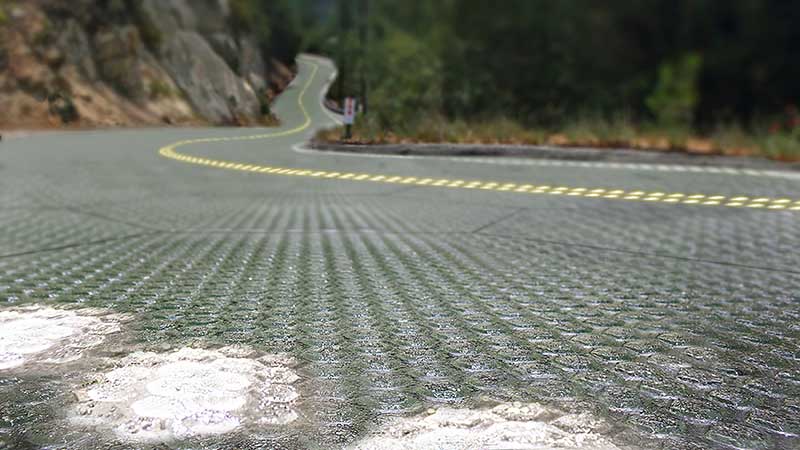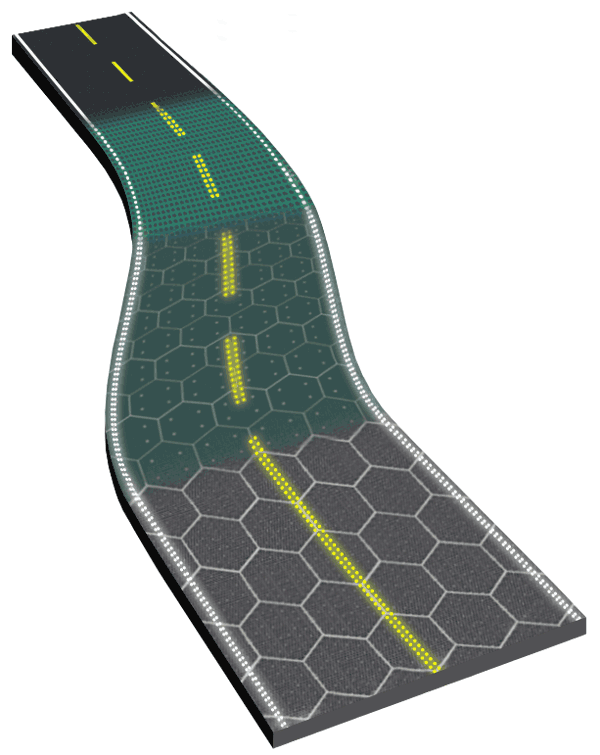
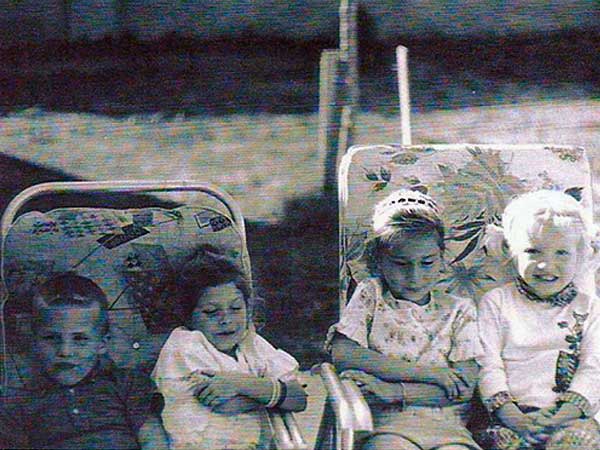 The Solar Roadways® journey began on an ordinary day as most life changing adventures do. Scott and Julie had known each other since they were small children, in southern California in the 1960’s when roads and highways looked, well – just like they do today!
The Solar Roadways® journey began on an ordinary day as most life changing adventures do. Scott and Julie had known each other since they were small children, in southern California in the 1960’s when roads and highways looked, well – just like they do today!
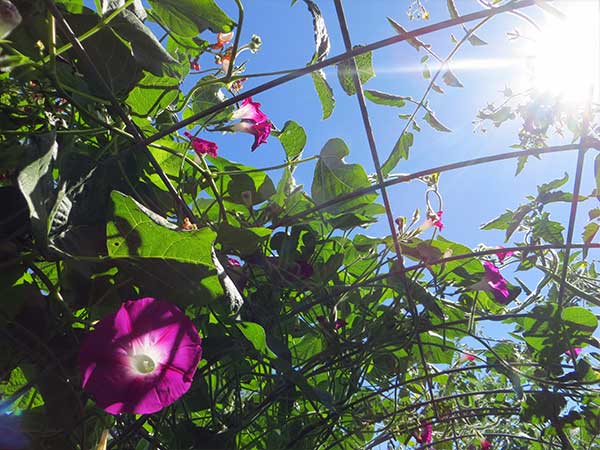 Years later, married and living in Idaho, Scott and Julie were working in their garden. We’d been reading Al Gore’s An Inconvenient Truth and were feeling very concerned about climate and environmental issues. Julie wondered aloud whether roads could be made out of solar panels. We’d been contemplating buying rooftop solar panels out of concern for the environment. Suddenly, an image popped into Julie’s mind of solar panels on the driveway and the road. She asked Scott’s opinion of this idea, but he just laughed and said that would be impossible – the fragile solar panels would be crushed by cars.
Years later, married and living in Idaho, Scott and Julie were working in their garden. We’d been reading Al Gore’s An Inconvenient Truth and were feeling very concerned about climate and environmental issues. Julie wondered aloud whether roads could be made out of solar panels. We’d been contemplating buying rooftop solar panels out of concern for the environment. Suddenly, an image popped into Julie’s mind of solar panels on the driveway and the road. She asked Scott’s opinion of this idea, but he just laughed and said that would be impossible – the fragile solar panels would be crushed by cars.
Julie dismissed the idea, but Scott’s engineering mind just couldn’t let it go. About a week later, he said, “If we can design a protective case, then you might be onto something about that solar roadway idea.” We decided to brainstorm. Many hours were spent on a couch getting more excited as realization after realization flowed into us:
“We could add heating elements and roads would always be snow free.”
“We could make road lines out of embedded LEDs.”
“This would generate SO much renewable energy.”
“Those ugly wires could go into some kind of compartment alongside the roads.”
“We could use the panels for parking lots too.”
“And sidewalks.”
“And driveways.”
On it went until we had written up a nice summary of the idea. We decided to present it to our friend and neighbor Dr. Pam Bird, author of the book, “Inventing for Dummies”, whose company had been advising inventors for many years. Pam thought the pursuit would be difficult, but ultimately could be very successful.
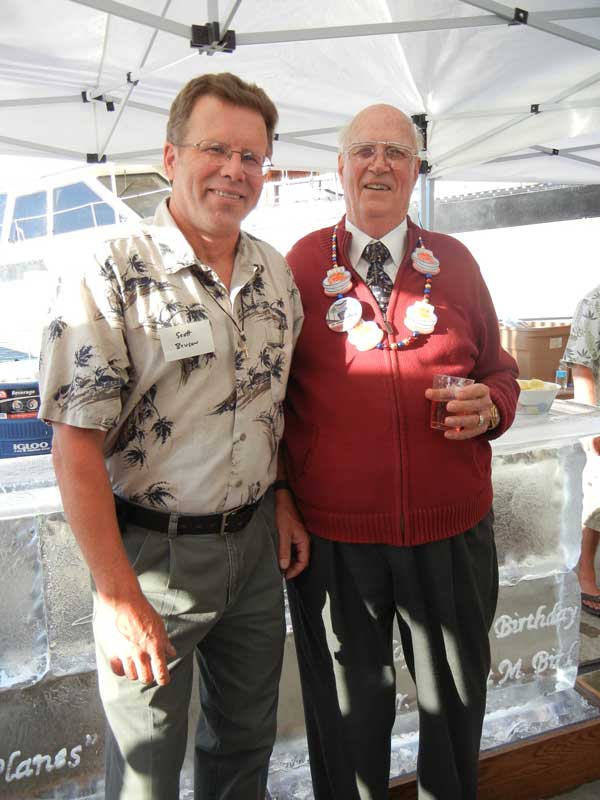
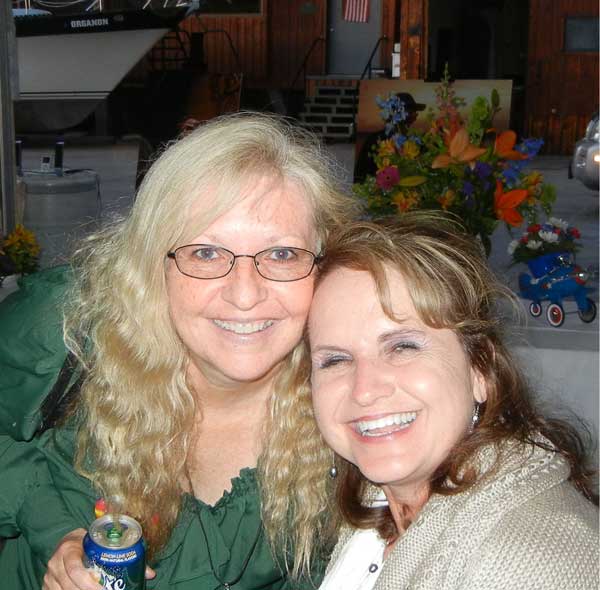 Side note: Pam and her husband, the famous inventor Dr. Forrest Bird both became valued members of the Solar Roadways’ Advisory Board. Tragically, both died in 2015: Forrest of natural causes, and Pam lost her life while flying her own plane. We miss them both terribly.
Side note: Pam and her husband, the famous inventor Dr. Forrest Bird both became valued members of the Solar Roadways’ Advisory Board. Tragically, both died in 2015: Forrest of natural causes, and Pam lost her life while flying her own plane. We miss them both terribly.
With Pam’s blessing, we decided to take a leap of faith and see if the world liked our idea. We’ve been fortunate to have ever gathering supporters join us along the way, but in the beginning, it was just the two of us (Scott and Julie). Scott had just finished an engineering job in Italy and decided to devote himself full time to the new endeavor, while Julie continued her private counseling practice. We started a website and a few articles were written about our wild idea. We began the long, arduous, and expensive patent process.
A couple of fortuitous events happened. The YERT team, who were making a documentary called “Your Environmental Road Trip” (YERT), came to visit. They were traveling to all fifty states to look for ideas to halt global warming. Their footage of Scott was included in their documentary, which generated publicity for us. We were invited to speak at Booz Allen Hamilton in Virginia. We were near Washington DC, so we thought we would try to speak to some senators and congress people about our idea. One of those was Idaho’s own Senator Mike Crapo, who was immediately supportive and later made this video for us.
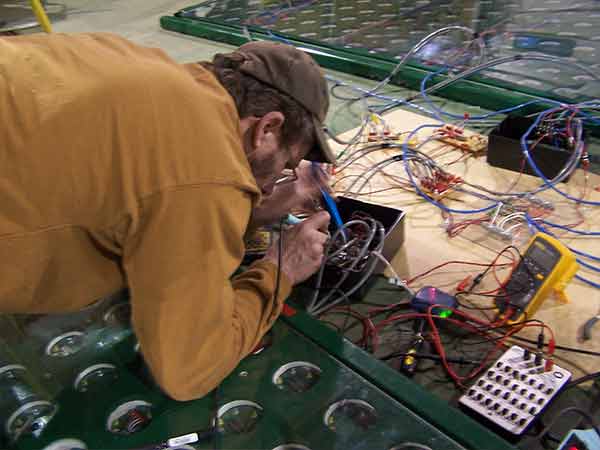
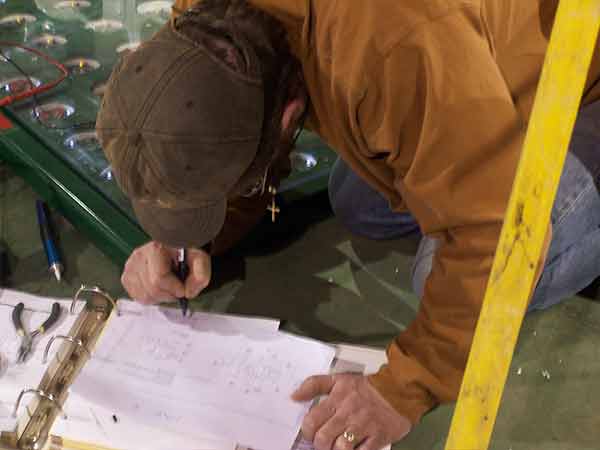 The next big event was the USDOT’s SBIR solicitation, looking for a new pavement system that could help pay for itself with the generation of renewable energy. We applied for the Phase I SBIR (Small Business Innovation Research) contract and received the $100,000 six-month award. Although not required, we decided that in addition to collecting scientific feasibility papers from university professors, we wanted to actually build a crude prototype. The prototype had LEDs, but did not contain solar cells, since it was an indoor project and was not designed to withstand the weather.
The next big event was the USDOT’s SBIR solicitation, looking for a new pavement system that could help pay for itself with the generation of renewable energy. We applied for the Phase I SBIR (Small Business Innovation Research) contract and received the $100,000 six-month award. Although not required, we decided that in addition to collecting scientific feasibility papers from university professors, we wanted to actually build a crude prototype. The prototype had LEDs, but did not contain solar cells, since it was an indoor project and was not designed to withstand the weather.
A substantial amount of work was required to engineer this prototype. We were blessed to have the help of enthusiastic volunteers.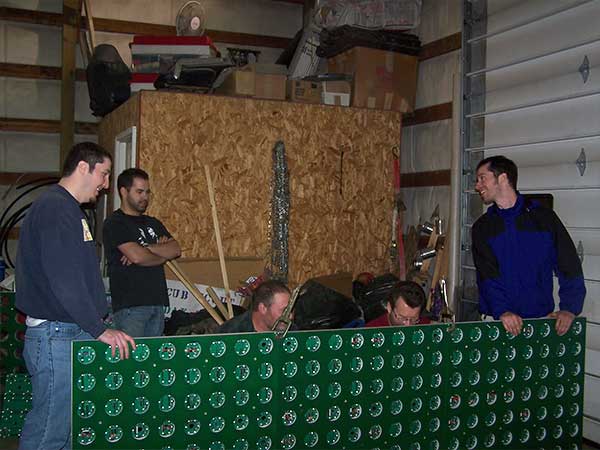
We completed our prototype in February 2010. It was a 12-foot by 12-foot panel. Due to its size, we realized it would be a nightmare to transport and to install (we later reduced the size for SR2). But the functionality worked well and showed the world the basic idea in a tangible way.
We also built a prototype stormwater redistribution system and a 3-foot by 3-foot crosswalk panel with load sensors to experiment with both of those technologies. Sensors determine when a weight (such as a pedestrian or some form of wildlife) is on its surface. The crosswalk panel would flash when a certain level of weight was detected. It also sent a signal to the panel, and the words "SLOW DOWN" would appear. This demonstrated the ability of the road panels to communicate with one another, along with any drivers traveling across their surfaces.
The SR1 prototype allowed the world to visualize some of the possibilities of an intelligent road surface.
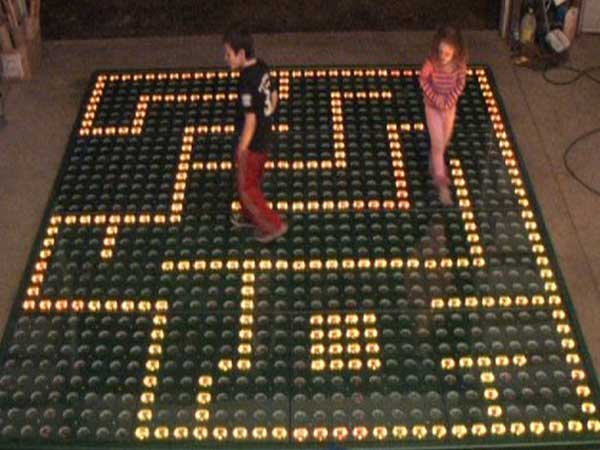
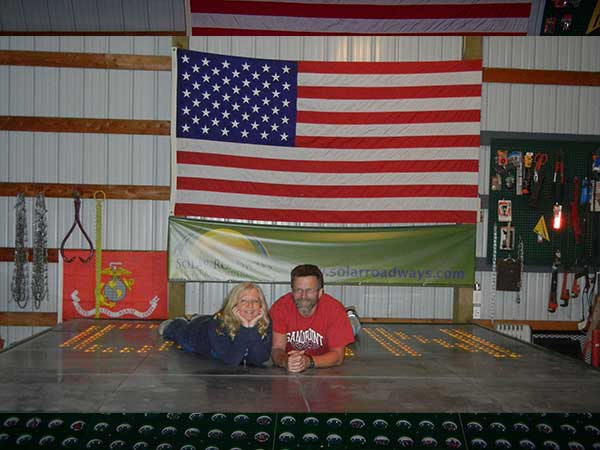
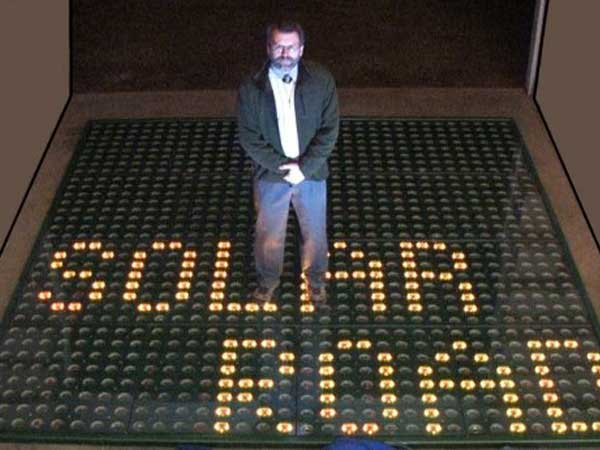
Increased media attention meant that more people were becoming aware of Solar Roadways®. SR was featured in such publications as Popular Science, Fast Company, The Daily Beast, Venture Beat, Wired, and Roger Ebert’s Journal. YERT made a short documentary about the development of this prototype. Click here to watch.
Read more about Phase I work here
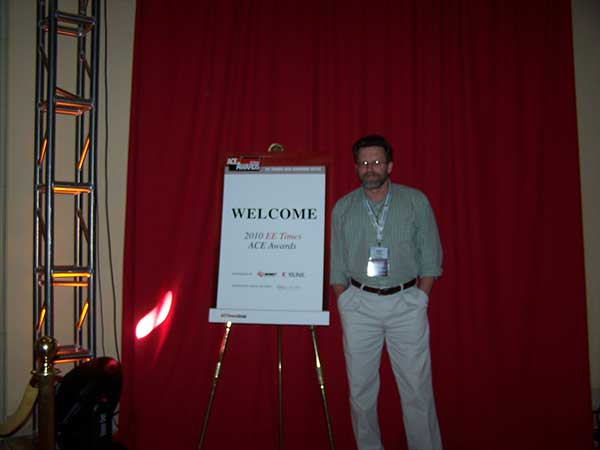 Three exciting events took place in 2010:
Three exciting events took place in 2010:
In April of 2010, shortly after completing the first prototype, Solar Roadways® was chosen as a finalist in the EETimes ACE awards. The category was Most Promising Renewable Energy. Although we lost to National Semiconductor, we just thought, “Wow, we lost to National Semiconductor!” Amazing, at such an early stage of our company’s development.
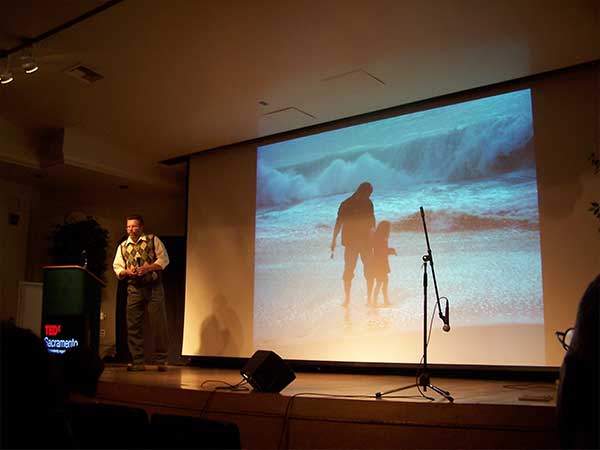 Another happy event for SR happened in 2010: the invitation for Scott to give a TEDx talk in Sacramento, CA. A TEDx talk can be stressful, the difficulty is in trying to deliver your message with an 18-minute time limit! Many will prepare for months trying to perfect their talk. The early days of our journey afforded no such luxuries. The TEDx crew had kindly arranged a variety of meetings for us in Sacramento and our days there were full. We finally found time to complete the outline for the talk at 3:00 a.m. the night before and woke up early for more meetings. Scott actually dozed off just before he was handed a microphone and asked to come on stage! Julie wondered if he was being given some help from above as he delivered his emotional message which ended with a standing ovation and lines of people waiting to talk to us.
Another happy event for SR happened in 2010: the invitation for Scott to give a TEDx talk in Sacramento, CA. A TEDx talk can be stressful, the difficulty is in trying to deliver your message with an 18-minute time limit! Many will prepare for months trying to perfect their talk. The early days of our journey afforded no such luxuries. The TEDx crew had kindly arranged a variety of meetings for us in Sacramento and our days there were full. We finally found time to complete the outline for the talk at 3:00 a.m. the night before and woke up early for more meetings. Scott actually dozed off just before he was handed a microphone and asked to come on stage! Julie wondered if he was being given some help from above as he delivered his emotional message which ended with a standing ovation and lines of people waiting to talk to us.
After completing our first USDOT contract, we were invited to apply for a Phase II contract, which we did. While we awaited word on our application, money became very tight. The life of an entrepreneur is filled with uncertainty. Help came from an unexpected source: General Electric. They announced their Ecomagination Contest. The prize for the entry which garnered the most popular votes was $50,000. We spent many hours each day answering questions on the contest website and began to move up in the standings. On October 7th, 2010 we were awarded the $50,000 award after receiving the most votes from among 3795 ideas submitted. We were flown to New York for a ceremony along with other winners. Winning the popular vote was an encouragement and that prize money kept SR moving forward.
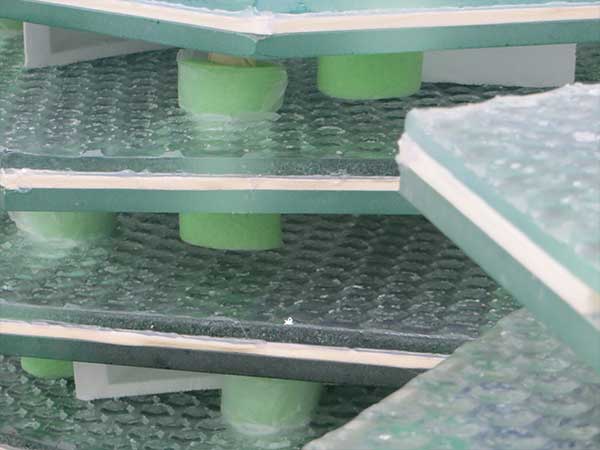 We were awarded a 2-year $750,000 Phase II SBIR contract by the USDOT in July of 2011. This funding allowed us to conduct more research and build the world’s first prototype solar parking lot. This was a complex task and extremely difficult to manage within the allowed budget. First, we had to create a brand new prototype: the SR2. We made many changes: the panels became smaller (about 4 square feet), changed shape to become hexagons, glass was used for the top and bottom of each panel and this time solar cells were included.
We were awarded a 2-year $750,000 Phase II SBIR contract by the USDOT in July of 2011. This funding allowed us to conduct more research and build the world’s first prototype solar parking lot. This was a complex task and extremely difficult to manage within the allowed budget. First, we had to create a brand new prototype: the SR2. We made many changes: the panels became smaller (about 4 square feet), changed shape to become hexagons, glass was used for the top and bottom of each panel and this time solar cells were included.
Creating the textured glass surface was one of the challenges. Various textures and panel shapes were developed and tested. In the end, a hexagonal shape and optimal texture were selected. We were pleased and surprised at the beauty of the glass in addition to its functionality.
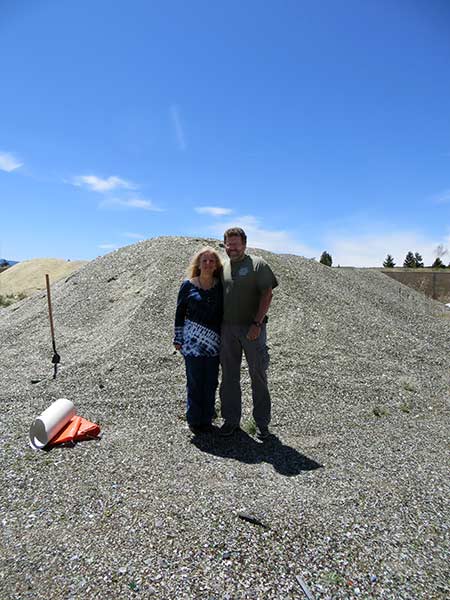 We wanted to use recycled glass in the concrete base that we had to pour for the parking lot (because it was new construction). That turned out to be a challenge. We learned that most glass just ends up in landfills, even when people are trying to recycle it. In the end, we had to travel to Montana to pick up recycled glass. Unfortunately, pulling 1,500 pounds of glass destroyed the transmission on our truck, but we did manage to get the glass home. We were able to successfully use it as 10-percent of the aggregate in our base.
We wanted to use recycled glass in the concrete base that we had to pour for the parking lot (because it was new construction). That turned out to be a challenge. We learned that most glass just ends up in landfills, even when people are trying to recycle it. In the end, we had to travel to Montana to pick up recycled glass. Unfortunately, pulling 1,500 pounds of glass destroyed the transmission on our truck, but we did manage to get the glass home. We were able to successfully use it as 10-percent of the aggregate in our base.
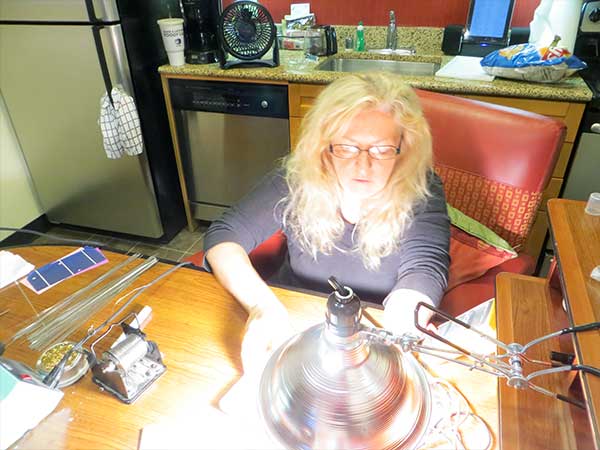 We managed to stretch the Phase II funding to create 108 panels, which we soldered by hand, along with two volunteers! We installed them ourselves too with handful of helpers. The chosen site was on our own property, adjacent to our electronics lab for easy monitoring and testing.
We managed to stretch the Phase II funding to create 108 panels, which we soldered by hand, along with two volunteers! We installed them ourselves too with handful of helpers. The chosen site was on our own property, adjacent to our electronics lab for easy monitoring and testing.
Due to multiple delays from our suppliers, we asked for and received an extension. Finally, in March of 2014 , the installation of the world’s first solar parking lot was completed.
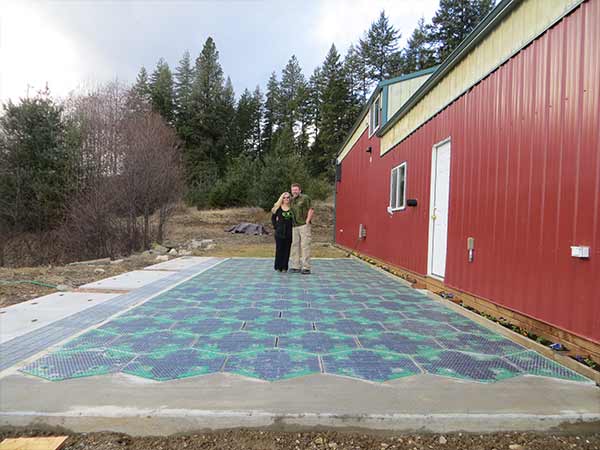
Publicity increased throughout the Phase II contract period:
In 2011 the YERT team - who had visited us so early in our development - included Solar Roadways® in their documentary, Your Environmental Road Trip, which premiered in 2011. CNN began to create special segments about SR in 2011 too. That year also brought welcome attention from such media sources as: The Wall Street Journal, Smithsonian, CNET, and Scientific American.
 Although requests for interviews were regretfully declined a great deal of the time in deference to engineering, 2012 brought more diverse journalists who featured Solar Roadways®: The Los Angeles Times, Upworthy, Government Technology Magazine, and Pilot Challenge Magazine. Julie worked long hours to grow our social media presence and we even agreed to an AMA on Reddit.
Although requests for interviews were regretfully declined a great deal of the time in deference to engineering, 2012 brought more diverse journalists who featured Solar Roadways®: The Los Angeles Times, Upworthy, Government Technology Magazine, and Pilot Challenge Magazine. Julie worked long hours to grow our social media presence and we even agreed to an AMA on Reddit.
In 2013, there were articles in USA Today, The Parking Professional, and Spiegel (Germany) and SR was honored to be chosen by Google as one of their Moonshots. Shortly thereafter Scott presented a Solve for X talk about Google Headquarters in NYC. We were also invited to visit the Google campus in California and enjoyed a ride in the Google Car.
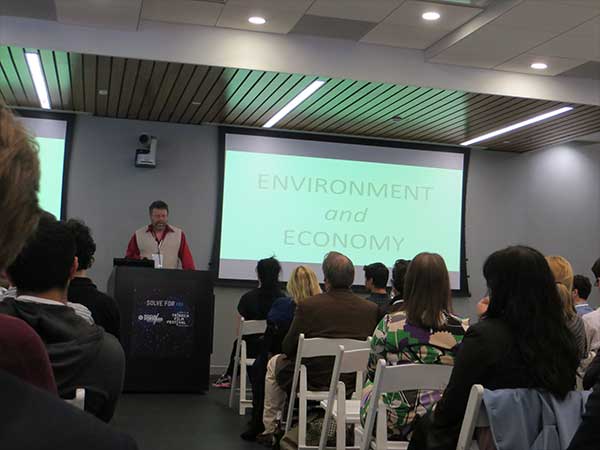
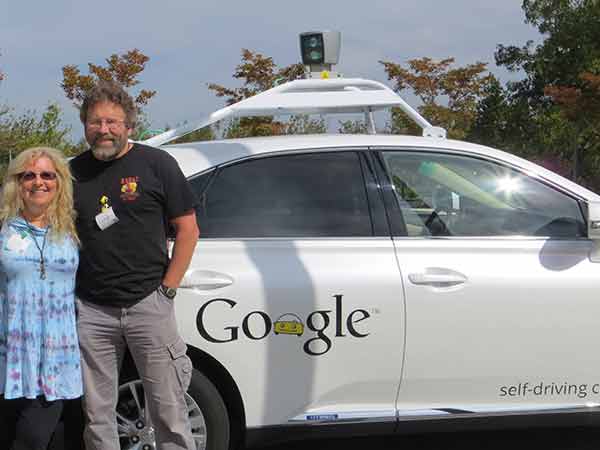
Also in 2013 Solar Roadways was chosen as a finalist in the World Technology Network awards in the category of Energy.
We had another connection with GE, when we were filmed for a short documentary by GE/Focus Forward. It was directed by Michele Ohayon and filmed by the wonderful cinematographer Theo Van de Sande, who filmed movies such as: Crossing Delancey, Blade, and Just Go With It. Watch it here!
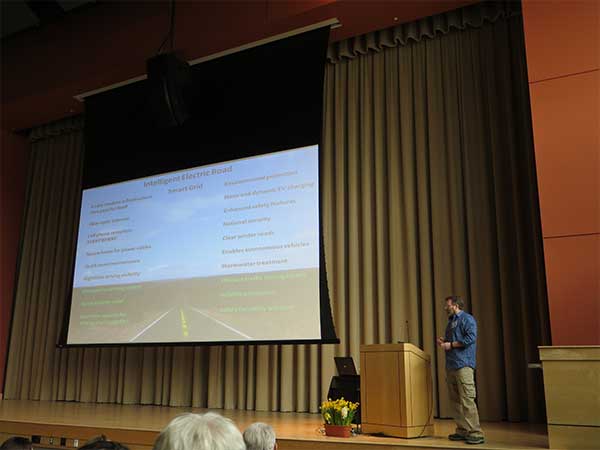 During this time, hundreds and then thousands of people began to reach out and inquire about purchasing SR panels, working for SR, and investing in SR. Many invitations for speaking engagements arrived. A handful were accepted, and many more regretfully declined as we attempted to stay focused on engineering. We began to be more and more aware of the need for help – actually a team, but had no funds for hiring. People began to suggest that we consider a crowdfunding campaign. While wrapping up the Phase II contract, we began to research this option. We decided another leap of faith was called for and we launched an Indiegogo campaign with the goal of raising one million dollars. Thanks to supporters from all over the world, we more than doubled our goal, raising over 2.2 million dollars.
During this time, hundreds and then thousands of people began to reach out and inquire about purchasing SR panels, working for SR, and investing in SR. Many invitations for speaking engagements arrived. A handful were accepted, and many more regretfully declined as we attempted to stay focused on engineering. We began to be more and more aware of the need for help – actually a team, but had no funds for hiring. People began to suggest that we consider a crowdfunding campaign. While wrapping up the Phase II contract, we began to research this option. We decided another leap of faith was called for and we launched an Indiegogo campaign with the goal of raising one million dollars. Thanks to supporters from all over the world, we more than doubled our goal, raising over 2.2 million dollars.
A crowdfunding campaign is not for the faint of heart! We worked literally every waking moment, sometimes 18 hours a day. We were busy replying to comments on social media, doing interviews, and filming “thank you videos” (one of our Indiegogo perks) on our parking lot until dawn.
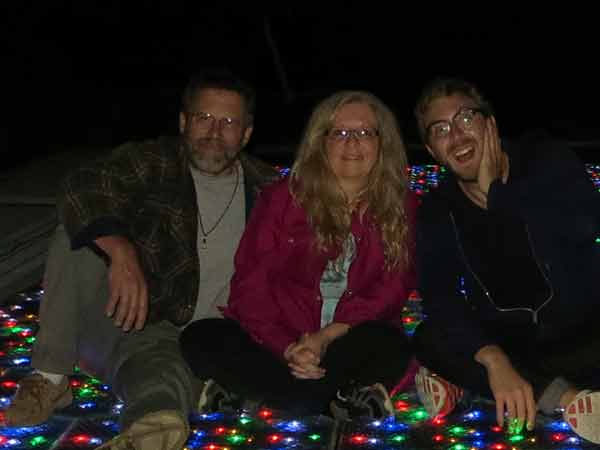 Several things worked together to help: A wonderful volunteer named Michael Naphan made us a little video called Solar Freakin’ Roadways! We are so grateful that Michael saw the vision for this video and worked tirelessly to put it together (while sick!) during our campaign. We had never even met him – the kindness of strangers can be amazing! Later he came to visit us in Idaho and see the parking lot.
Several things worked together to help: A wonderful volunteer named Michael Naphan made us a little video called Solar Freakin’ Roadways! We are so grateful that Michael saw the vision for this video and worked tirelessly to put it together (while sick!) during our campaign. We had never even met him – the kindness of strangers can be amazing! Later he came to visit us in Idaho and see the parking lot.
A team of supporters formed a Facebook Solar Roadways Support Team, which now has over 1,300 members. They worked tirelessly to help spread the word about SR on social media, and have been a tremendous source of help and encouragement. It’s been amazing to have so many people feel compelled to join us on this journey and help make it happen. Even celebrities have supported SR. Their posts, tweets, blogs, and even videos made a big difference during the Indiegogo Campaign. We can’t begin to express our gratitude to people like: Julian Lennon, George Takei, Nathon Fillion, Mark Ruffalo, and so many others.
In 2014, with our Indiegogo Campaign and viral video, we could hardly keep up with daily requests for interviews. Some of the press included: Autoblog, Gizmag, EcoWatch, Engadget, HuffPost Green, IFL Science!, CNN Tech, Elite Daily, Green Car Reports, Google +, Architect, The Sierra Club, The Weather Channel, Forbes, Popular Mechanics, National Geographic, Delta Sky Magazine, and Newsweek.
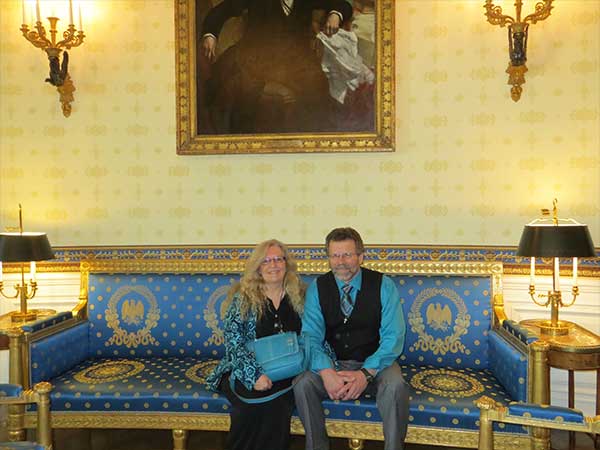 In June, Scott and Julie were invited to the White House for the (first ever) Maker’s Faire. President Obama spoke, and we were happy to meet Bill Nye there.
In June, Scott and Julie were invited to the White House for the (first ever) Maker’s Faire. President Obama spoke, and we were happy to meet Bill Nye there.
Thanks to the kindness of our Indiegogo donors, SR was able to purchase a building with both manufacturing and office space. We hired 3 team members and began to purchase needed equipment. It’s been a solemn responsibility for us to take care to use the funding wisely. We’ve honored our campaign promises, knowing that manufacturing space and equipment were key to taking on more of the process internally in order to bring costs down.
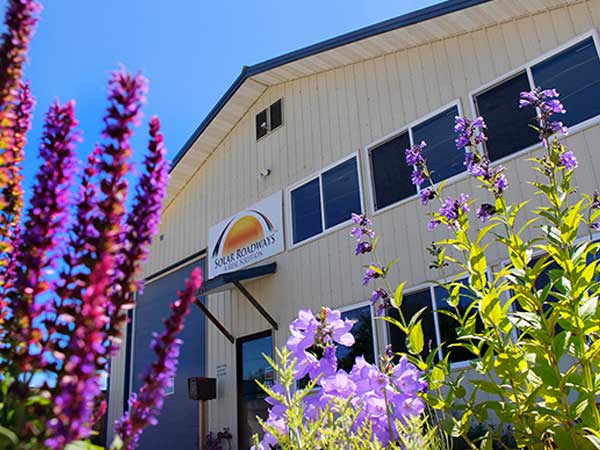

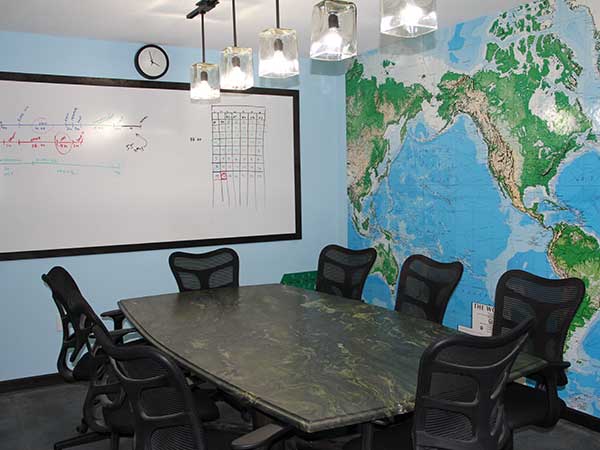
In October, Indiegogo chose us as their speaker for their yearly staff meeting for employees from various locations. They only feature one campaign per year, so this was a big honor. They showed us the bell they ring whenever a campaign reaches 1M in funding. They said, “We got to ring that bell twice for Solar Roadways®!” Indiegogo also featured Solar Roadways® in a short documentary filmed in December.
The year was capped off with the honor of being selected as one of the 100 Best Innovations of the Year by Popular Science.
In 2015, we were not able to accept any interviews. We “went dark” as we like to say, in order to give engineering 100% of our attention – such as creating our new SR3 panels based on the knowledge gained with the SR2s.
Still we were grateful for the press we received, most especially the mention on the White House website in President Obama’s State of the Union Address. There were articles in places such as: Infrastructure USA, CNN Money, and Tony Robbin’s blog. We received numerous requests to appear on television shows. We accepted only one: Innovation Nation, which aired on Valentine’s Day 2015.
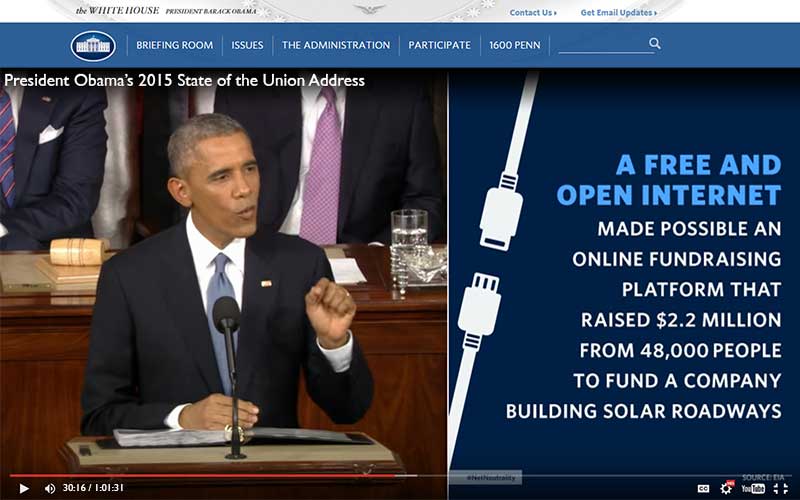
The same month we accepted Indiegogo’s invitation to open a new InDemand crowdfunding campaign, designed for those who have already had a successful Indiegogo Campaign but have a need for ongoing funding to support their development. We have rarely publicized it before now, as our focus has been devoted to engineering. Additional donations are gratefully accepted to help us purchase more needed equipment and hire more employees.
Read more about our Phase II contract here..
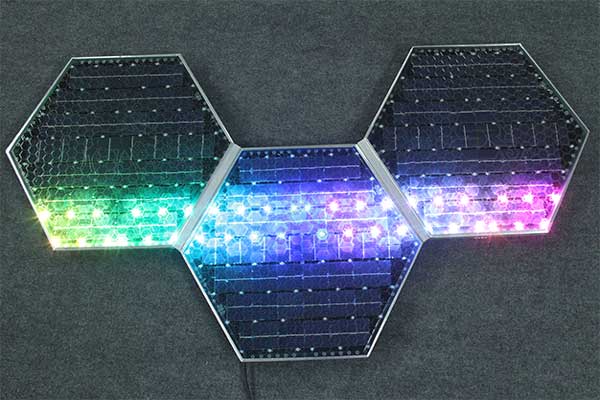
After installing the Phase II prototype parking lot, we realized that some improvements could be made to the SR2 panel design. We knew we wanted to increase the solar cell coverage, since SR2 had only 69-percent surface coverage. We decided that if we used edge connectors, we could eliminate the mounting holes which were taking up needed real estate on the panels. This change increased our solar cell coverage by 25-percent. The edge connector also makes the panels simpler to install. Solar Roadways® has purchased machinery to take on more and more of the manufacturing in house. Learn more about SR3 panels here.
In November of 2015, we received the award: 2-year $750,000 Phase IIB SBIR contract. This contract will enable the needed research to move toward road and highway installations. Read about the research that this contract will fund here.
The sheer amount of surfaces each country devotes to roadways is enormous. Allowing that space to double as a solar farm could have very positive implications in the battle to put a halt to Climate Change. Mark Dixon, of the YERT team just returned from COP21 in Paris and shared these thoughts with us.
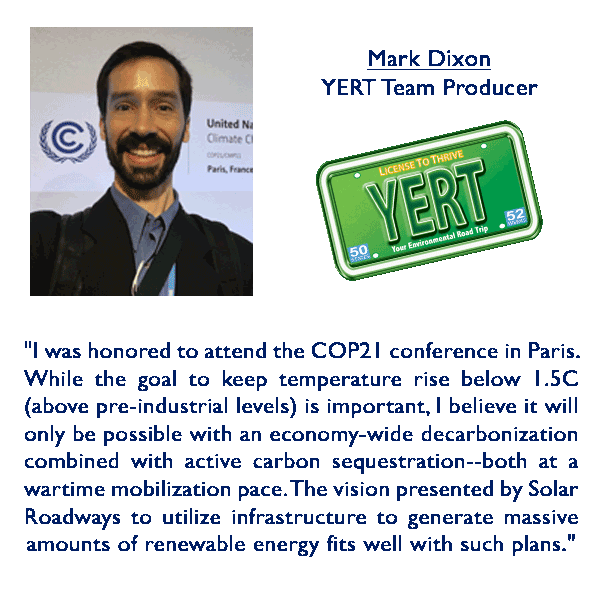
Our journey thus far has been a wild mix of faith, really hard work, opportunities to connect with amazing people who want to share the journey with us, travel to incredible new places, and gratitude. Where will this journey lead? Our hope is that the goals we set in the formative stages of SR will be reached: world-wide installation of SR driveways, parking lots, and highways… enough to provide clean energy for all. It will take a global acceptance and thousands of people working together to make it happen. Thank you for sharing our journey and telling others, so they can join in too.
